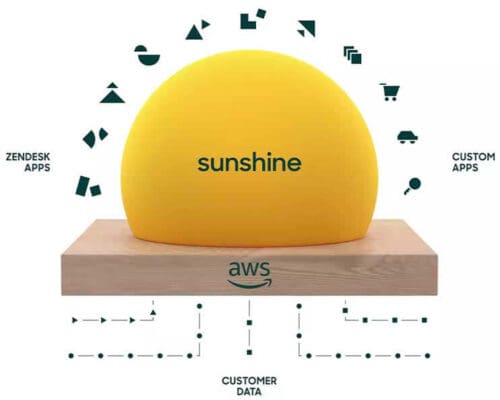A recent Forrester report highlighted that robotic process automation (RPA) onboards agents faster, boosts their confidence and creativity, and improves service quality.
A recent Forrester report highlighted that robotic process automation (RPA) onboards agents faster, boosts their confidence and creativity, and improves service quality. Despite this, Forrester also found that over 50% of deployed RPA solutions have not scaled beyond ten robots – even with almost half of all customer service organisations using RPA alongside other automation technologies.
With a Zendesk study showing that the current COVID-19 pandemic has created an overwhelming growth in support tickets, the untapped potential of RPA can be critical in removing repetitive tasks from human agents, freeing them for more important, creative jobs. So how can customer service leaders leverage RPA to its fullest potential and maximise their customer service offering?
Successful RPA deployment is a team effort
A ‘strike team’, comprising a sponsor, an architect and a manager, should be set up to handle the automation process, liaising closely with your organisation’s existing IT team and your customer service team. Roles and responsibilities have to be clearly defined and RPA’s strengths and limitations explained comprehensively.
RPA is not AI. It can’t make machines think and, while it’s four to five times faster than agents, it must not be spread too thinly or the effect will fizzle out. Although it won’t improve operational processes or smooth the user experience, it’s an ideal solution for reproducible work that doesn’t require creativity or judgement. By functioning unattended, it allows agents to devote their time to nurturing customer relationships.
It’s critical to effectively communicate how RPA will disrupt jobs and benefit your agents. Even with changing workforce demographics increasing the popularity of automation, old habits die hard. Some agents fear automation will mean job losses, leading to 11% of global information workers not being open to training automation solutions. For RPA to be deployed effectively and its full potential realised, it should be introduced as a reinforcement of corporate strategy, built and implemented to achieve specific goals.
On the whole, businesses don’t have a good track record in this respect, with only 19% of agents saying their company has clearly articulated the mission of incorporating technologies in the workplace, according to Forrester. Furthermore, only 18% of workers understand their career path in a world of automation. That said, RPA can be an attraction for new hires, as teams are more productive overall and the workplace environment more pleasant, with fewer mundane, repetitive tasks. Clear and effective communication to confidently walk the line between old and new is key.
Evolve workforce management practices
When it comes to tracking sales agents’ performance, it’s important to factor in the use of RPA to gain more accurate insights. For the activity analysis, customer service organisations track cost, customer satisfaction and regulatory compliance SLAs. And while RPA does not change this approach, its impact on the numbers should be noted.
Essentially, the efficiency and value to the company for both RPA and human agents should be monitored. By factoring in the RPA’s performance, including failure rates, we can gain a clearer picture of how sales agents are spending their time. RPA empowers workforce managers to perform a more strategic role, and therefore better understand their agents’ strengths. Even so, Forrester states that only 13% of organisations are factoring bot-supported efficiencies into their workforce management calculations.
That vigilance must be ongoing – RPA-enabled agents are more effective and more efficient, but those initial gains need to be monitored in order to be sustained into the long term. In the case of Baleària, the Spanish maritime transport group, redk identified the incorporation of RPA into business processes as one of the key tactical objectives of an ambitious and comprehensive plan for reorganisation. Routine tasks were eliminated, teams’ motivation improved and their work optimised.
RPA in the future
RPA can be an important step in digital transformation, and where correctly implemented it plays an integral role in CRM transformation as it did with Baleària, but it cannot be the only technology utilised in the workplace.
It is predicted to evolve to combine natural language understanding, machine learning and predictive decision-making to automate more complex tasks.
RPA will unlock greater opportunities in future, but its current potential should not be understated – it’s important that your organisation use it in the most efficient way now.
With over 15 years’ experience as technical and consultancy CRM experts, redk aims to support companies seeking to enhance efficiency and profitability through world-class tools that optimise team performance across organisations. Talk to us to see what we can do for your business.










